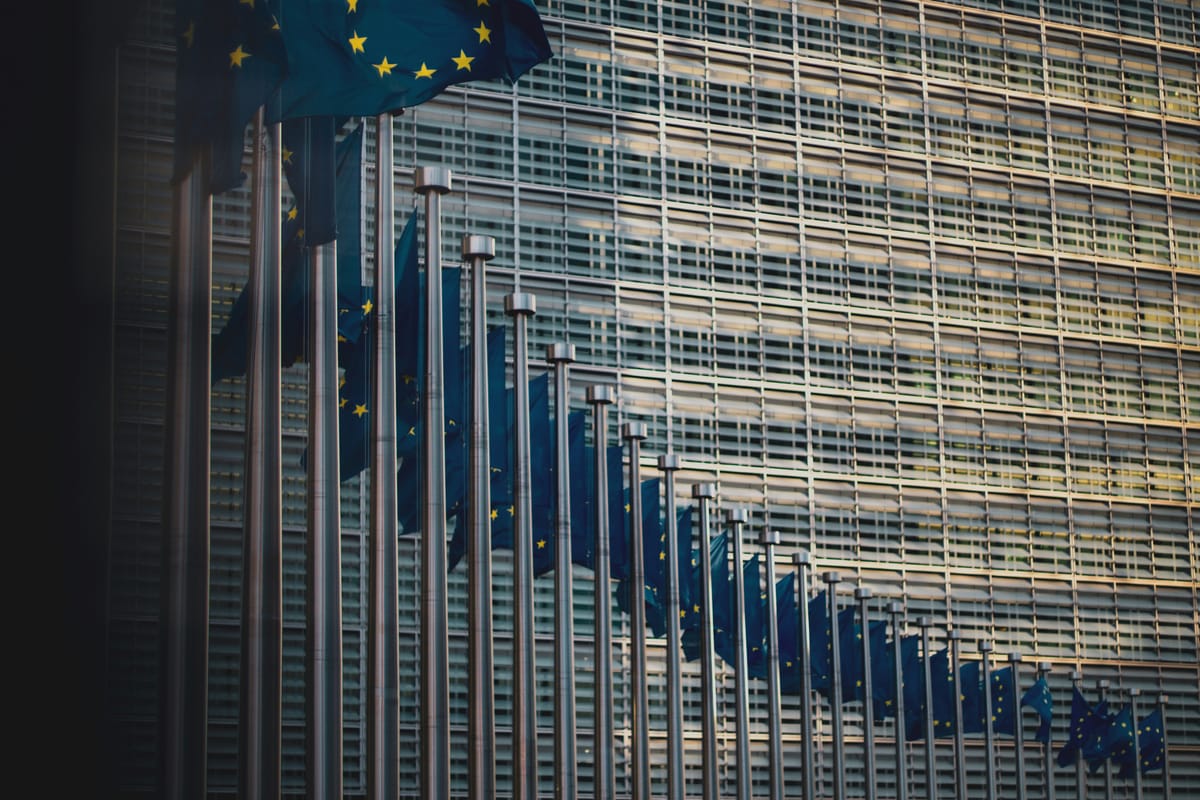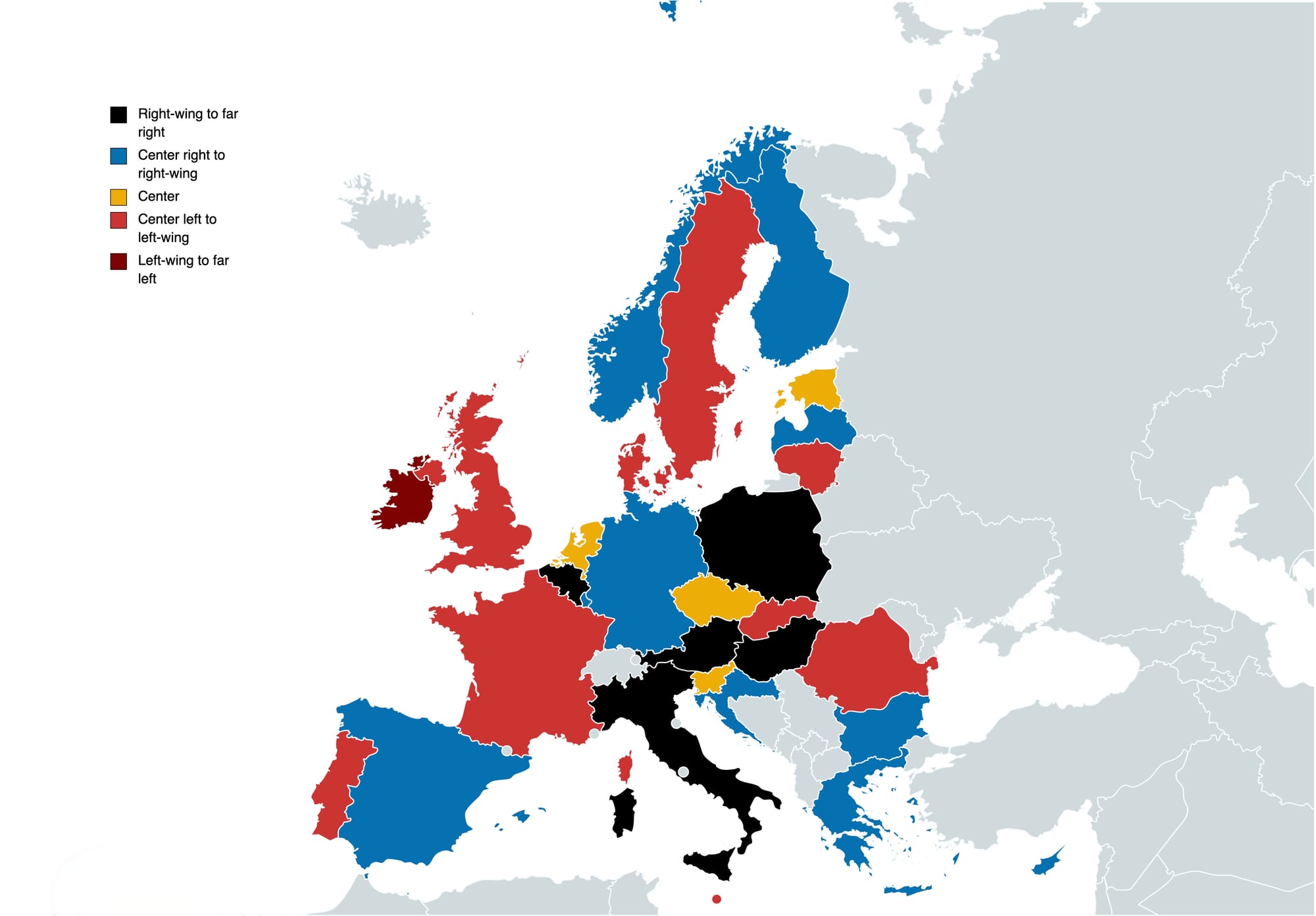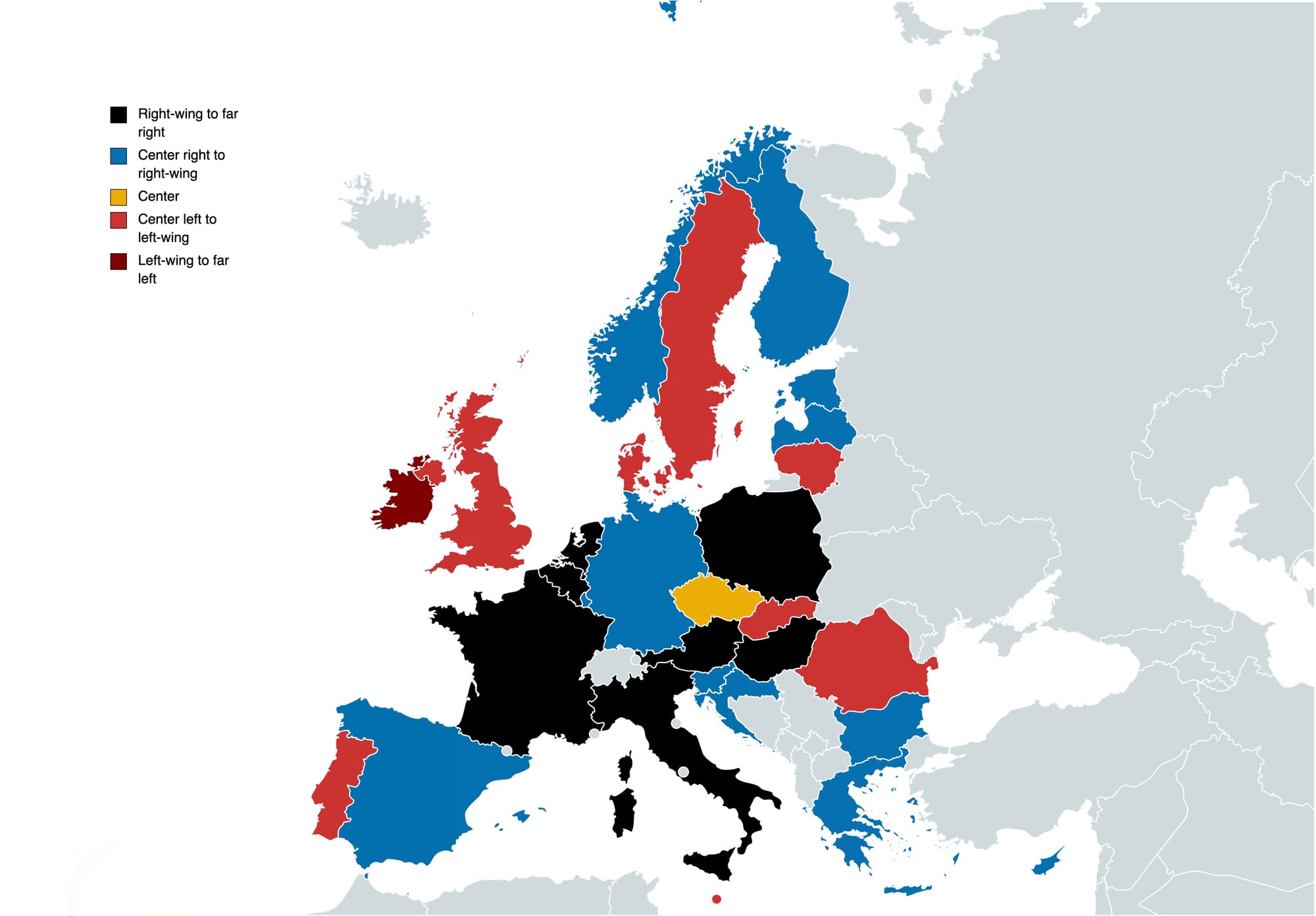Numbers Don't Lie: Europe's Ever Changing Electorate

One year ago Europe was seeing inflation rates starting to decrease, an energy crisis slowing down and the economy beginning to progress across the board. In such circumstances, many would assume the non-establishment parties might begin to suffer. However, with Europe seemingly moving from one crisis to the next; seeing its energy security put at risk alongside national security with the raging war in Ukraine and the continuing hurt of inflation the non-establishment saw a rise. Growing in all corners of the Union and outside. In this article, we analyze why.
The map below showcases the largest political party in each EU member state and the UK 1 year ago. Ideologies are classified through EU party affiliation or what the consensus agrees upon.

Looking at the map it is found that 9 countries are classified as blue respectively red for 9 others. Black represents 5 nations and yellow 4. Only 1 country, Ireland, sees a dark red party hold the majority. No clear geographical differences affect political orientation, with all ideologies spread out evenly across the map (except dark red due to the small sample size). Interestingly most countries with the classification right-wing to far right are in central Europe, due mostly to PiS and Fidez in Poland respective Hungry being especially strong. Austria and Italy flipped because of political instability. After much political turmoil, the CDU in Germany is biggest again and the Greeks are holding strong in their preference.
The map reflects the time's surge in support for center-left parties and the weakening center-right. The liberal and centrists see a drop in support with the largest nation France turning red. The far-right held strong managing to retain these nations for a long time. Ireland continued its support of Sinn Féin.
The map below reflects the same information as the map above, however, with data compiled recently.

This map is very different. With the far-right gaining major ground, and liberal France and the Netherlands falling, the electorate is turning more and more towards the parties once on the political fringes. The days of liberal and centrist power-houses are seemingly gone, the center lost 3 of its strongholds in as little as a year 1 to the far-right and the other 2 to the center-right to right-wing. The political landscape of Europe has changed dramatically. Blue has increased the most from 9 to 11 nations, red losing 1 moving from 9 to 8, black from 5 to 7, yellow from 4 to 1, and dark red remaining the same. Europe is moving to the right, that is sure, however, is the center-right just a waiting room until people move on to the far-right. Nothing would suggest that currently, however, liberal and center-right strategists alike should be scared of the prospects of the continuing loss towards the far end of the right. The AfD in Germany has seen poll surges recently, the CDU retains its strong lead, however, it's not unimaginable for the AfD to continue its growth spurt. Sweden has seen right-wing to far-right SD solidify its position as 2nd largest since the elections of 2022. However, the right-wing to far-right gaining more nations is unlikely. Spain's VOX is losing support, and Chega in Portugal is rising, however, not close to defeating the establishment parties. Greece, Cyprus, and Bulgaria all see strong center-right to right-wing movements. Croatia and Slovenia have strong established parties as well.
Those opposed to the right-wing to far-right can most likely breathe a sigh of relief as the prospects of the continued growth of this ideology to new nations within Europe are looking slim. Poland's PiS is for the first time since 2015 being challenged for first place, France's National Rally maintains only a small lead over the left and Mr Macron's Renaissance and the FPÖ in Austria is seeing a loss in support. This alongside the limited growth opportunities (for becoming the largest party) for the right-wing to far right is vital. The right-wing to far-right are not going anywhere any time soon, however, it may be reasonable to assume that their growth is coming to an end. That was the thinking at the start of 2023 as well, we will see if this time is any different.



